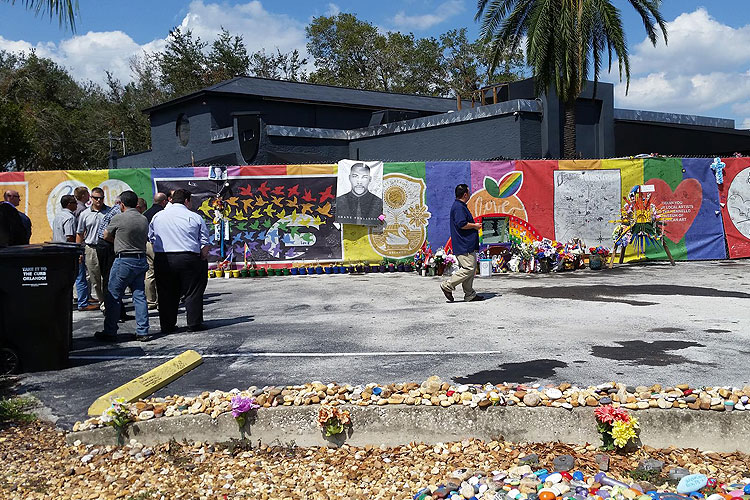
Thanks to Fire Engineering for highlighting National Fire Protection Association 3000™(PS), Standard for an Active Shooter/Hostile Event Response (ASHER) Program, in the October 2018 issue (“NFPA 3000: A First Step Down a Long and Perilous Path”). NFPA 3000 emphasizes the importance of unified mass-casualty event planning, response, and recovery. We appreciate Fire Engineering providing editorial space to this important issue. Similar to questions posed in the article, we have been asked why and how the NFPA developed this standard. Let me provide a brief overview of the NFPA’s process and how NFPA 3000 came to be.
For more than a century, the NFPA has facilitated a respected consensus process that has produced some of the most widely used codes and standards in the world including more than 100 that impact first responders. Our purview goes far beyond our fire safety efforts as evidenced by our ongoing work to address new hazards with professionals in public safety, emergency management, community risk, electrical services, the energy sector, engineering, the chemical and industrial industries, health care, manufacturing, research, the government, and the built environment.
After the Pulse Nightclub massacre in June of 2016, Chief Otto Drozd of the Orange County (FL) Fire Rescue Department requested that the NFPA develop a standard to help authorities come together and create a well-defined, cohesive plan that works to minimize harm and maximize resiliency. The NFPA responded by establishing the NFPA Technical Committee on Cross Functional Emergency Preparedness and Response. In mid-April 2018, NFPA 3000 was issued by the NFPA Standards Council, making it the first consensus document related to active shooter incidents and hostile events. This marks only the second time in the NFPA’s 122-year history that we have issued a provisional standard. Provisional standards are developed in an expedited process to address an emergency situation or other special circumstance.
The 60-member Technical Committee responsible for NFPA 3000 is the NFPA’s largest startup committee to date, with representation from law enforcement, the fire service, emergency medical services, hospitals, emergency management, security, private business, the Department of Homeland Security (DHS), the Federal Bureau of Investigation (FBI), the Department of Justice, the International Association of Chiefs of Police, the Fraternal Order of Police, the Major Counties Sheriffs Association, and others. Committee members provided job-specific insight and real-world observations from mass killings at the Mandalay Bay Resort, the Pulse Nightclub, Sandy Hook Elementary, the Sikh Temple, the Boston Marathon, and other less publicized events. Additionally, more than 800 people provided input during the public input and public comment phases of the standards process. All of the proceedings from the process can be viewed online at www.nfpa.org/3000next.
NFPA 3000 helps entire communities organize, manage, communicate, and sustain an active shooter/hostile event preparedness, response, and recovery program. In addition to NFPA 3000, the NFPA developed an Online Training Series; a downloadable checklist; a readiness assessment document; educational storytelling videos that share the personal experiences of Technical Committee members with lessons learned; and a fact sheet for authorities to find out more about establishing a proactive, collaborative active shooter/hostile event program.
As the authors of the Fire Engineering article noted, “NFPA 3000 was a significant undertaking. Standards require coordination and community engagement at a level well beyond the current capabilities of most responder organizations.” This statement is spot-on. The Technical Committee has begun work on the second edition of NFPA 3000. Slated to debut in 2020, the first draft period for NFPA 3000 ended in August 2018, and the second draft period will close in May 2019.
Active shooter and other hostile events have sadly become a norm in our society, but the catastrophic reverberations of these incidents can be minimized with proactive, purposeful planning. I strongly encourage all those who have an interest in this topic to learn more about and engage in the standards development process. More information about NFPA 3000 can be found at nfpa.org/3000news.
Extrication supplement
The extrication supplement to the November 2018 issue of Fire Engineering is a spectacular combination of critical information. The concrete truck article, a once-in-a-career extrication call, contained several critical facts/innovations and extrication techniques specific to those trucks that most of us are not trained on and would not know about without this article. The training value here is the invaluable facts/techniques to keep in your back pocket and pull out when you are faced with a difficult job like the scenario in the article. Kudos to Randy Schmitz for concisely sharing his expertise.
The two other articles,” The Art of Making Space” and “To Crib or Not to Crib?” are superb reviews of techniques we need to be sharp on for the more common extrications. The emphasis these articles place on standard and innovative techniques that improve/reduce the extrication time fire departments use to preserve the golden hour for victims will result in lives saved across our nation. Thanks to Shawn Wagner and Les Baker for delivering a solid dose of training on some of our lifesaving, but too often perishable, skills. All three articles are hanging on the training board in my firehouse.


